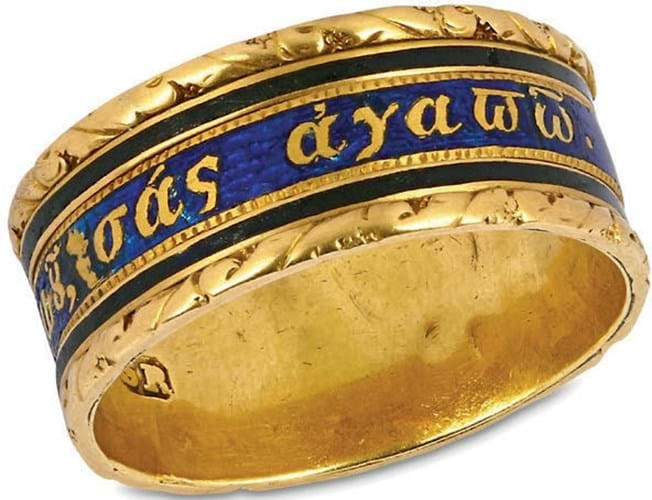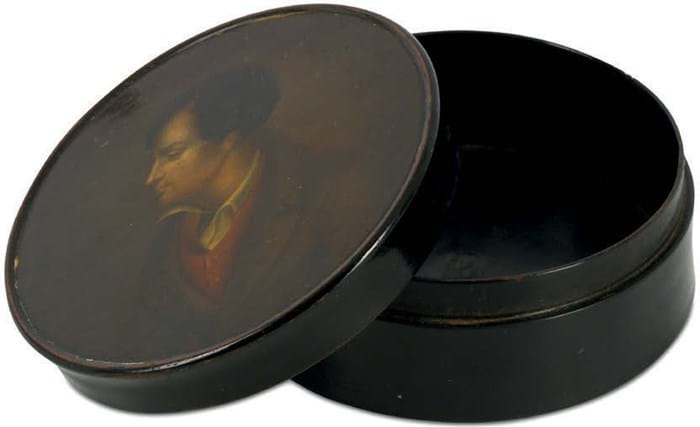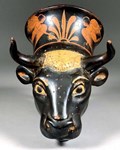
English verge pocket watches with Turkish numerals and tortoiseshell piqué decoration are traditionally associated with the flourishing export trade that existed with the Ottoman Empire around the turn of the 19th century.
A recognised coterie of London watch makers, notably George Prior (active 1800-30), catered to the affluent markets of the near East.
However, the Prior watch offered at Chiswick Auctions (25% buyer’s premium) in London on February 27 provides the possibility of an altogether more exotic association.
With silver cases hallmarked for Thomas & Richard Carpenter (1806) and James Richards (1809), the brass travel case is engraved with the crest of George Gordon Byron, 6th Baron Byron (1788-1824), whose final days were spent fighting the Ottomans in the Greek War of Independence.
It came for sale as part of a collection of Byron memorabilia offered by a European collector under the title The Poet, the Lover and the Patriot.
The estimate of £2000-3000 was roughly the price a good Prior Ottoman market watch might bring without any association to the best-known of the Romantic poets. It did rather better, selling at £10,000.
Double Byron
This was the second significant tranche of Byronic memorabilia on the market in recent times (another was dispersed by Mellors & Kirk in Nottingham in 2019) but there was no shortage of demand for collecting rarities.
The top-estimated lot in this Chiswick sale was a medal group: a gold, silver and enamel Grand Commander’s insignia for the Royal Order of the Redeemer awarded to Sir James Emerson Tennant.
It was sold together with gold, enamel and rock crystal locket preserving a lock of hair engraved with the dedication Byron from Count P Gamba to James Emerson, Athens 1825.
Gamba stayed very close to Byron on his last days in Missolonghi while Tennant, an enthusiastic supporter of the Greek struggle for independence and the Officer in the Artillery of ‘Foreign Service’, may have made Byron’s acquaintance shortly before his death.
Last sold at Spink in 1997, here the medal group took £15,000 against hopes of £8000-10,000.
Love token

Gold and enamel ring copying that given by Byron to Teresa Makri – £5500 at Chiswick Auctions.
A blue and black enamel and 18ct gold ring hallmarked for London 1823 was the same design as that given by Byron to his first great love Teresa Makri, the famous Maid of Athens.
The ring is seemingly a near contemporary homage to the relationship and was evidently made a year before Byron’s death. It took £5500 (estimate £600-800).
Cult viewing
The auction also included an array of less personal commemorative items: the busts, cameos, prints, portrait miniatures and pottery figures that were part of the cult of Byron that thrived for most of the 19th century.
Two German papier-mâché circular snuff boxes dated to c.1830 sold particularly well.
One measuring 4in (10cm) across pictured the poet at the age of 19 during his first trip to Greece in 1809. The scene is after a painting by George Sanders that was published as an engraving in 1830. It took £2200 (estimate £600-800).
The following lot, a little larger at 5in (12cm) across, was finely painted with a bust profile portrait and titled Lord Byron in red cursive script. It sold at £3400 (estimate £800-1200).
A rare commemorative pink and blue lustreware jug, c.1820, printed with masonic symbols, verses of the popular song Since Life’s a Jest and a printed representation of Byron in Greek costume, sold at £1300 while a simple octagonal ‘nursery’ plate printed with Byron on his first trip to Greece took £300.
















